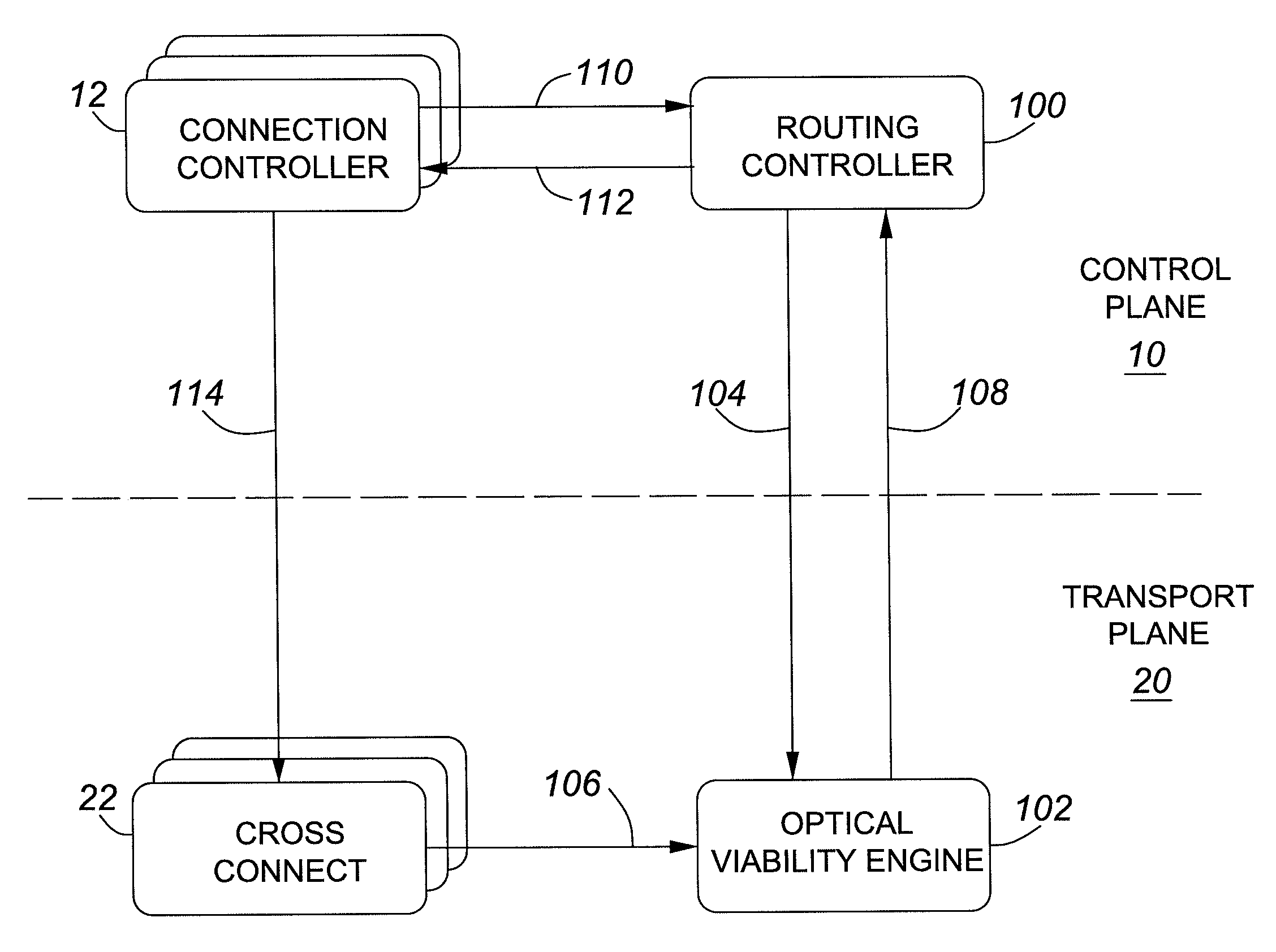Method of and system for routing in a photonic network
a photonic network and network routing technology, applied in multiplex communication, optics, instruments, etc., can solve the problems of difficult scaling, unsuitable for providing on-demand services, and still largely pre-planned, and achieve the problem of interoperability between different vendor's equipment and different telecommunications providers
- Summary
- Abstract
- Description
- Claims
- Application Information
AI Technical Summary
Benefits of technology
Problems solved by technology
Method used
Image
Examples
Embodiment Construction
[0048]These embodiments represent the best ways of putting the invention into practice that are currently known to the Applicants although they are not the only ways in which this could be achieved.
[0049]Control of XCs in a photonic network will be achieved through the introduction of a network control plane ‘above’ the transport plane. Various telecommunications standards bodies are currently working towards defining protocols, architecture and functional requirements of such a control plane.
[0050]Notably, the International Telecommunication Union (ITU-T) has produced architectural and functional recommendations for what is called the Automatically Switched Transport Network (ASTN), also sometimes referred to as the Automatically Switched Optical Network (ASON). The general architectural specification of the ASTN is set out in ITU-T Recommendation G.8080. The recommendations concerning routing architecture and functionality of the ASTN are set out in ITU-T Recommendation G.7715. Th...
PUM
 Login to View More
Login to View More Abstract
Description
Claims
Application Information
 Login to View More
Login to View More - R&D
- Intellectual Property
- Life Sciences
- Materials
- Tech Scout
- Unparalleled Data Quality
- Higher Quality Content
- 60% Fewer Hallucinations
Browse by: Latest US Patents, China's latest patents, Technical Efficacy Thesaurus, Application Domain, Technology Topic, Popular Technical Reports.
© 2025 PatSnap. All rights reserved.Legal|Privacy policy|Modern Slavery Act Transparency Statement|Sitemap|About US| Contact US: help@patsnap.com



